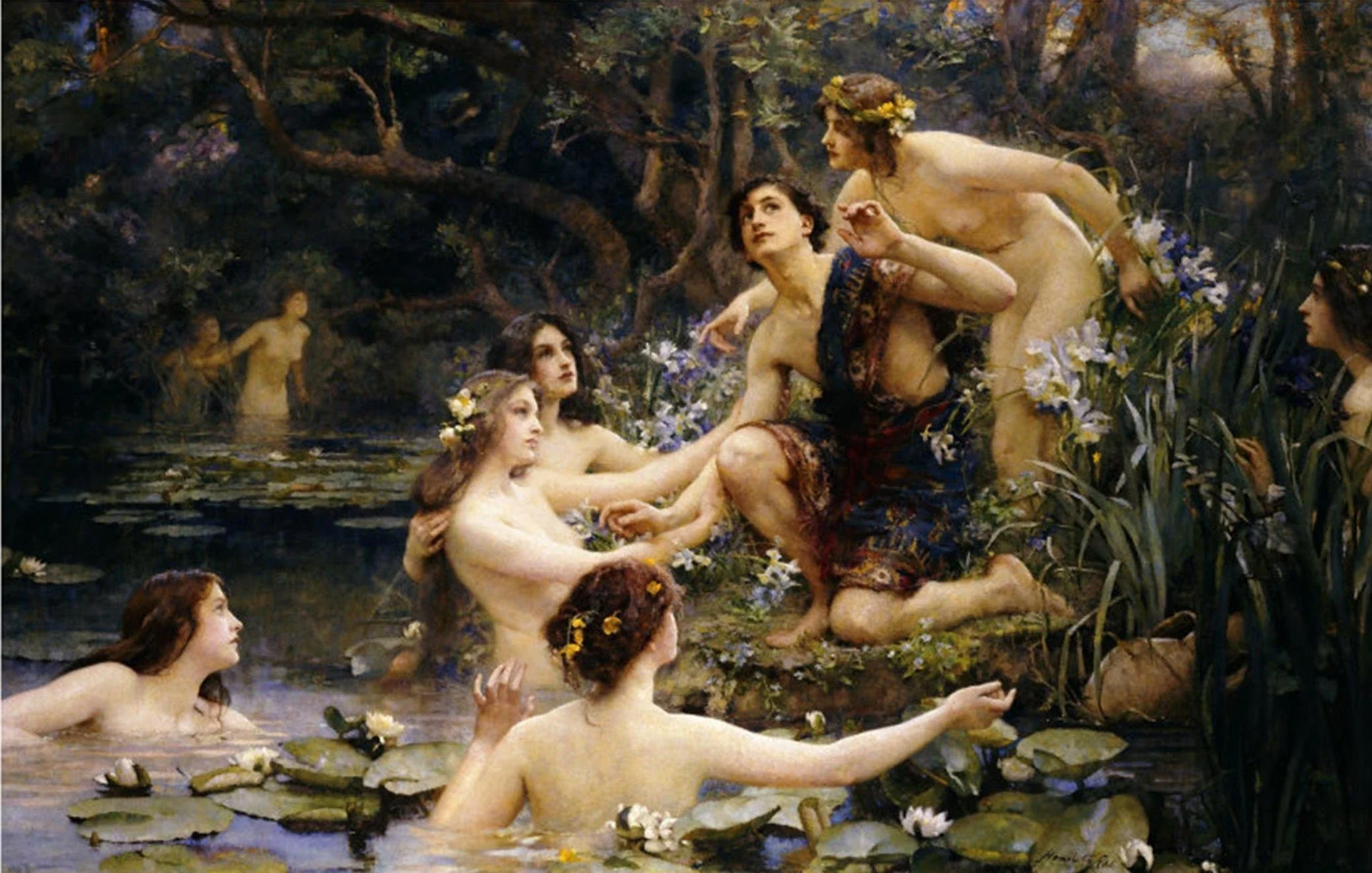Nymph’s Reincarnation I
Nymph in Greek mythology represents a nimble fairy, and starting from plate 46 of Aby Warburg’s Mnemosyne Atlas, she gradually became a bearer of image value. In Warburg’s unfinished labyrinth of cognition, the folds of the Nymph’s garments embody the surviving image values and emotional experiences of human civilisation. When this ancient light travels across the Eurasian continent and lands in BEI Jiaxiang’s Shanghai Dialect series, the woman in a qipao turning to look back in the morning light of Shanghai’s alleyways transforms into a contemporary incarnation of the Nymph. Those silk patterns no longer represent material creases but rather resemble the memory threads that document the changes in 20th-century China.
Walter Burkert:
"The idea that rivers are gods and springs divine nymphs is deeply rooted not only in poetry but in belief and ritual; the worship of these deities is limited only by the fact that they are inseparably identified with a specific locality."
The hairpin worn by the woman in the Chinese Ladies series is BEI’s perfect translation of material memory. He uses a brush dipped in mixed paint of dominant colours and pearl white to mimic the metallic base and emerald feather texture of Qing Dynasty silver gilt hairpins. The bright, dry paint is restrainedly brushed onto the canvas, forming an iridescent effect similar to the “dragonfly eyes” glass beads from the Han Dynasty, especially against the dark background colours. The expressive brushwork of Chinese painting compensates for oil paint’s dynamic portrayal of lustre. The shimmering light of the hairpin shifts with the viewing angle, perhaps illustrating BEI’s Eastern interpretation of “the eternal moment”.
As for the treatment of folds, BEI also has his own considerations. The depiction of fabric in Western classical painting is more often used for volume shaping, as seen in Titian’s bed curtains and Sargent’s satin; this is the ultimate celebration of material civilisation. The ripple-like folds at the woman’s waist in Chinese Ladies, as she turns, respond to the silk folds in Ingres’ The Grand Odalisque, yet are not entirely content to serve realism and narrative alone. Through the interweaving of paint layers and textures, the recesses of the folds achieve an effect reminiscent of faded book pages, allowing the fashionable memories of 20th-century Shanghai to imprint within the layers of pigment, stirring the classical sentiments that Warburg yearned for.
Warburg believed that ancient motifs recur in different eras through Path Dependence, continuously circulating in history, with primitive human emotions concealed behind their forms. The repeated silhouette of the qipao in Chinese Ladies is not only a formal symbol of the Republican era but also a carrier of collective unconscious memory—these silhouettes retain emotional tension as they traverse history, manifesting as fabric that condenses the glamorous past of Shanghai into delicate silks that shimmer softly.
Shanghai Dialect II - Demure - Chinese Ladies Series
Oil on Canvas
73*91 cm
2017
Beyond clothing, Chinese Ladies features many everyday objects from the Jiangnan region, representing BEI’s reinterpretation of local cultural collective memory. The plain folding fan seems to echo the rhythmic fluctuations of Shanghai opera, the bamboo food box is filled with the taste of life in the alleyways, and the opened oiled paper umbrella shields the scene from the dampness of time.
Shanghai Dialect II -
Radiance
-
Chinese Ladies Series
Oil on Canvas
73*91 cm
2017
By juxtaposing traditional clothing with specific objects to freeze a moment of historical memory, this arrangement aligns with Holbein’s The Ambassadors. The double wooden frame in The Ambassadors displays scientific instruments and musical devices, creating a vertical narrative axis of “knowledge-faith-death”; in Chinese Ladies, the oiled paper umbrella leans against the bamboo food box, forming a horizontal interactive field of “clothing-objects-language”. Both works reaffirm Warburg’s core idea in Pathos Formula: the power of classical art lies not in formal innovation but in the recreation of primitive emotional containers—whether in the shadow of the plague in 16th-century London or the anxiety of dialect disappearance in 21st-century Shanghai, both achieve eternal expression through the objects and clothing depicted. BEI’s breakthrough lies in transplanting the Pathos Formula from Warburg’s mythical scenarios to the life of the folk life—raindrops falling from the umbrella that splash against the hem of the qipao, creating ripples belonging to old Shanghai.
Warburg’s Pathos Formula ultimately point to the universality of human emotions, while BEI Jiaxiang’s Shanghai Dialect injects local experience into this framework. The qipao woman he portrays is the Eastern Nymph that Warburg hadn’t got to foreseen.








